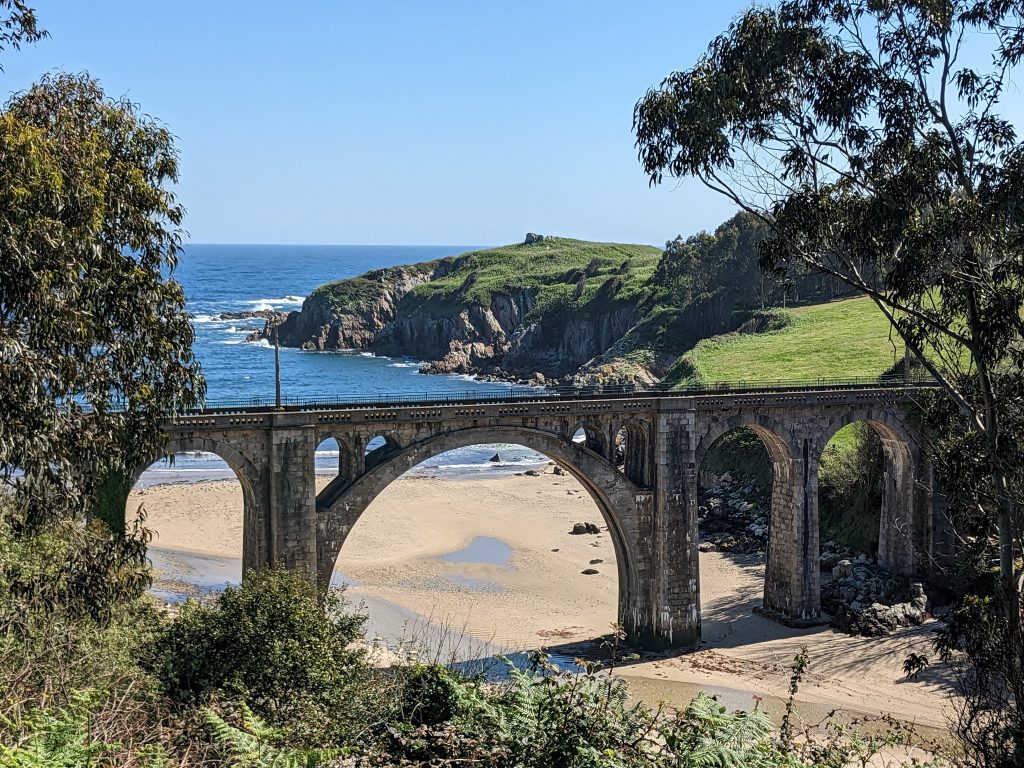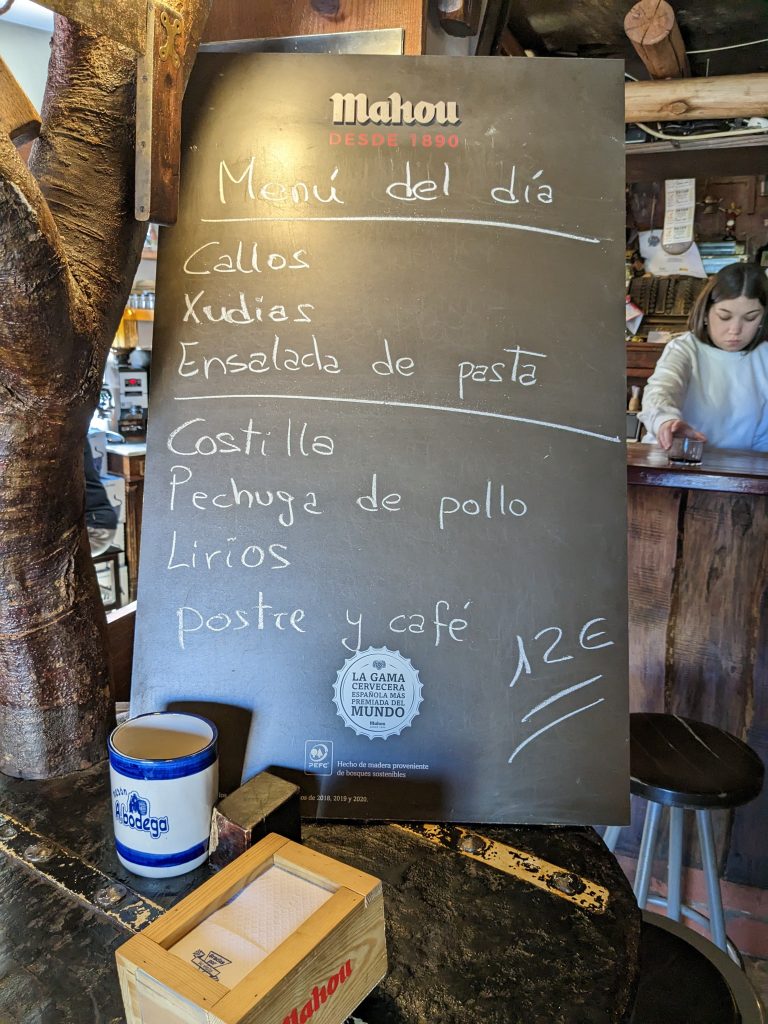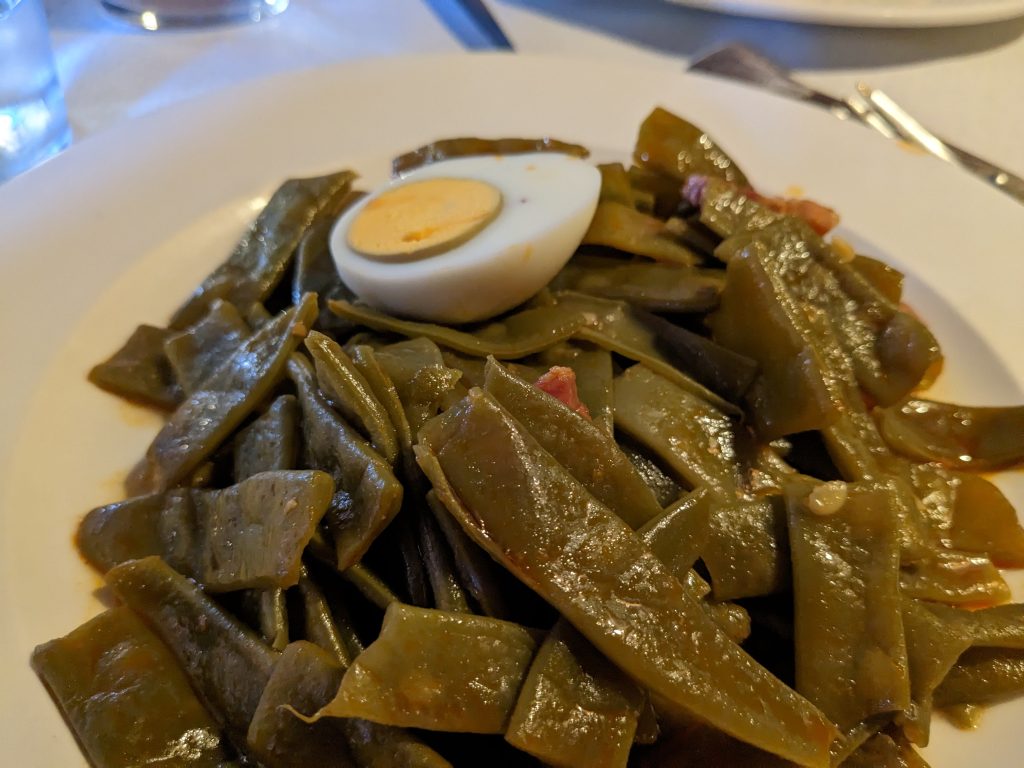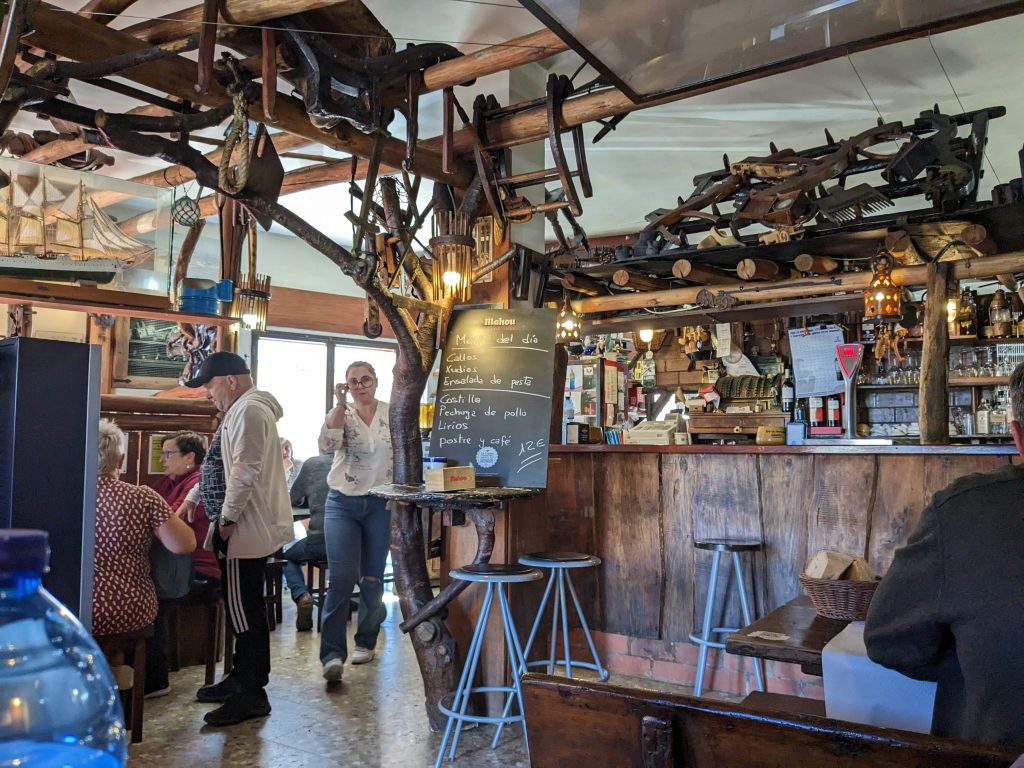Post by Wynette: We have decided to take the little Feve train to get to O Barqueiro. So, we’ll get there tomorrow in about an hour instead of after two days of walking. We decided to do this because those days’ walks were each 15 miles or so with NO services where they’d be needed (places to use the bathroom and rest the feet and have a coffee or lunch). Some would say we are cheating a bit, but we feel good about our decision. We did do much of these walks in 2019 with the help of some taxiing. This time, we are Feveing the whole way. We’ll write more about the Feve later. It’s a wonderful little train that follows the northern coast of Spain. It is dear to the hearts of many.







